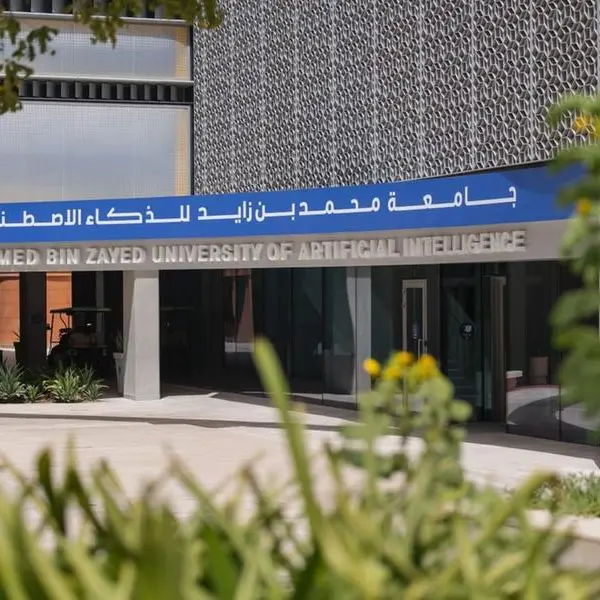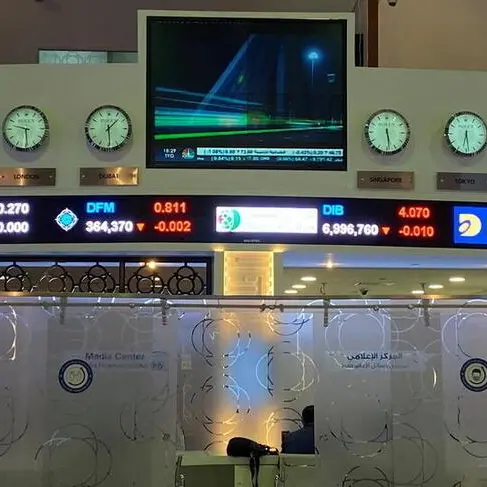ABU DHABI: 2nd June 2015 (WAM): The Abu Dhabi Investment Authority (ADIA) today issued its latest annual Review, with its Managing Director, HH Sheikh Hamed bin Zayed Al Nahyan, noting that the Authority "made solid progress in 2014 on multiple fronts, from improving internal processes and increasing our flexibility to target investment opportunities, to a continued strong focus on the development of our human capital ? a key driver in fulfilling our mission." The 2014 Review includes a detailed analysis of market conditions across the many asset classes in which the Authority invests and significant developments within each of its investing departments. In addition, it offers insights into ADIA?s culture and explains the Authority's approach to key areas such as investment strategy, governance and risk management.
One key development, HH Sheikh Hamed noted in his introductory letter, was the fact that "ADIA?s percentage of externally-managed assets declined to 65% in 2014, from 75% a year earlier, reflecting our efforts over recent years to strengthen the organisation?s in-house investment and analytical expertise." "As we enter 2015," HH Sheikh Hamed wrote, " I have never been more confident about how ADIA is positioned, and the efforts now under way to ensure we remain ahead of emerging opportunities and challenges. It was with considerable foresight that Abu Dhabi?s leaders chose to provide ADIA, at its creation, with the independence to focus solely on the pursuit of sustainable economic returns. We are acutely conscious of this responsibility and will continue to strive to ensure that the trust and confidence shown in ADIA all those years ago continues to be rewarded through our commitment and results." The text of the ADIA Review is available on: http://www.adia.ae/En/pr/ADIA_Review_2014_Web.pdf The full text of the letter from H.H. Sheikh Hamed bin Zayed Al Nahyan follows: "ADIA made solid progress in 2014 on multiple fronts, from improving internal processes and increasing our flexibility to target investment opportunities, to a continued strong focus on the development of our human capital ? a key driver in fulfilling our mission.
While being prudent and disciplined is embedded in ADIA?s culture, we recognise that long-term success requires a willingness to embrace change where appropriate. To that end, a major theme within ADIA in 2014 was "innovation", which inspired initiatives aimed at drawing upon the inherent creativity and broad experience of our diverse workforce. Among these: leadership forums and educational events that brought specialists from ADIA?s many disciplines together to debate global issues and trends, with the goal of stimulating fresh thinking and generating tangible outcomes. Last year also saw continued progress in our multi-year effort to strengthen our internal capabilities in key investment and support functions, in order to position the organisation optimally for the years to come. While this work is now nearing its conclusion, we will continue to recruit selectively in 2015.It has been this approach, of balancing the pressing demands of today with carefully planned, sustainable strategies for the future, which has allowed ADIA to navigate a steady course through often challenging markets in the four decades since our creation. Whether it is a global financial crisis, as seen in 2008, or a steep decline in energy prices, as witnessed last year, our mission remains the same, as do the principles that guide it. Indeed, such events serve as salient reminders of the important role that we have been entrusted to play on behalf of the Abu Dhabi Government: to ensure that Abu Dhabi continues to prosper even in a future when current sources of income are less able to fulfil that role.
At ADIA, we view this responsibility as an opportunity: where the trust placed in our stewardship is repaid not just through profits, but through our ability to reflect the values of the Emirate as a whole, of inclusion and collaboration between people of many nationalities to achieve something we all can share. In order to realise this vision, a key area of focus for the organisation in 2014 was on the way that we plan for the future. This included important work on the development of the ADIA-wide planning process, at a macro level, as well as efforts to better align our departmental objectives to identify overlaps and opportunities. By their nature, such efforts often go unnoticed by the outside world, but I believe they deserve mention for their role in ensuring that ADIA?s growth is built on sturdy foundations. Last year also saw a number of enhancements on the investment front. Most notably, this included the development of a new operating model for our investment departments that will increase the flexibility of managers to target "alpha" opportunities that may not easily be captured within the structure of ADIA?s strategic neutral benchmark, or policy portfolio. These activities will empower our skilled investment managers to seek outperformance, within agreed limits and in such a way to minimise the impact on ADIA?s overall asset allocation and portfolio risk. At a departmental level, two new mandates were created within the Internal Equities Department ? U.S. Equities, and High Conviction ? while ADIA?s Infrastructure team implemented a new organisational design, focused on sector specialisations coupled with geographic responsibilities. Last year also saw the appointment of ADIA?s first Global Head of Research, who will oversee the creation of a centralised research team in 2015 to complement our existing research activities within departments. Its goal will be to build a network of relationships across the research community, with a view to providing ADIA?s leaders with insightful analysis of fundamental and macroeconomic trends. From a portfolio perspective, meanwhile, ADIA?s percentage of externally-managed assets declined to 65% in 2014, from 75% a year earlier, reflecting our efforts over recent years to strengthen the organisation?s in-house investment and analytical expertise. Finally, in a demonstration of our commitment to education and talent development, ADIA hosted its inaugural Global Investment Forum (GIF), an internal two-day event that brought together ADIA employees with respected external speakers to debate major investment themes. To be held annually, GIF acts as an important catalyst for stimulating the cross-departmental sharing of information insights and experience across ADIA. As we enter 2015, I have never been more confident about how ADIA is positioned, and the efforts now under way to ensure we remain ahead of emerging opportunities and challenges. It was with considerable foresight that Abu Dhabi?s leaders chose to provide ADIA, at its creation, with the independence to focus solely on the pursuit of sustainable economic returns. We are acutely conscious of this responsibility and will continue to strive to ensure that the trust and confidence shown in ADIA all those years ago continues to be rewarded through our commitment and results. 2014 Market ReviewViewed through the prism of investment performance, 2014 was a year in which markets as a whole maintained the momentum of recent years to end on a mostly positive note. However, for many, it will be remembered for the emergence of three trends that likely will shape economies and markets in 2015 and beyond. Oil prices fell by almost half, and ignited broad uncertainty about future supply and demand for energy commodities. The economic divergence between a recovering U.S. economy and the economies of Japan and continental Europe intensified to a degree not seen for decades. In addition, a gradual slowing of growth in China drew questions about how big its economic downshift will be, and how policy will respond. Capital markets largely took these developments in their stride. Equity markets ended the year mostly higher ? except in economies dependent on oil exports ? though returns measured in U.S. dollars were diluted by the strong appreciation in that currency. Bonds also did well, supported by low inflation and continued accommodative monetary policies. While the timing and magnitude of the oil price decline caught markets by surprise, the reasons behind it could be attributed to issues of both demand and supply. Economic growth over the year came in somewhat below initial expectations, thus lowering demand; Supply was boosted by the continued expansion of U.S. production as well as increased exports from some Middle Eastern producers. The fall in prices had the expected negative impact on inflation measurements worldwide, although the full effects on economic activity have yet to be seen, as much of the decline came in the closing months of 2014. Divergence between a recovering U.S. economy and weakness in most other advanced economies increased as 2014 went on. While a severe winter restrained growth at the start of the year, the U.S. expansion soon resumed where it left off, eventually delivering year-on-year growth of 2.4% for 2014 ? its strongest full year of growth since 2010. Continental Europe and Japan turned in a very different picture. Economic growth came in well below expectations and inflation fell increasingly below policy goals. Policymakers responded forcefully, with massive new quantitative easing in Japan and the rolling out of a suite of new monetary policy tools in the Euro area, including an attempt to push short-term interest rates into negative territory. These policy moves, at a time when markets were beginning to factor in a probable rate rise by the Federal Reserve at some point in 2015, led to a powerful rally in the U.S. dollar. Finally, the cooling of the Chinese economy became increasingly evident in 2014, although it is worth noting that a growth rate of 7% can be deemed "slowing" only compared to the 10% trend China had enjoyed for many years. While it was inevitable that China would move to a more sustainable growth rate consistent with demographics and a higher level of productivity, such a deceleration remains a consequential development in so large an economy. Fortunately, China?s policy authorities appear to have managed the slowdown skillfully, providing reassurance to watchful investors. OutlookThe trends noted above pose important challenges for markets and policymakers, but they are manageable. The drop in oil prices will provide a boost to the economies of Europe, Japan, China, and other big net oil importers. Outperformance of the U.S. economy provides a welcome source of demand for the rest of the world. The recent evolution of asset prices ?stronger U.S. dollar, lower bond yields, and broadly steady equity prices ? should work in the direction of improving economic outcomes. Our focus as a long-term investor lies more with seeking to understand structural changes in the global economy, and what their implications are for the allocation of capital. The most important of these, and one we have discussed in previous years, is the growing importance of emerging market economies. Despite evident stresses that appeared last year in several of these countries, we see grounds for optimism: China?s government continues to improve its economic governance and prepare for a wider role in global capital markets. New leadership in India has signalled a renewed commitment to reform and modernisation of the economy. Economic policies in Brazil have sought stability and are laying a foundation for good long-term growth. These decisions improve the resilience of these important economies, and through their example, support better policies across the emerging world. The development that gives us most cause for reflection is evidence that the commitment to globalisation among major countries could be wavering. The world community is facing important challenges, such as the debate over global warming, doubts about the efficacy of economic policies, and temptations to use regulatory reform for protectionist motives. All countries can benefit from the free global interchange of goods, capital, people, and ideas, and we expect that policymakers will understand and support this. Assuming this policy support, we believe the global economy will continue to expand in the years ahead. This will provide a favourable environment for capital markets and continue to generate potentially attractive new investments in technology and infrastructure across an expanding world. "Copyright Emirates News Agency (WAM) 2015.











